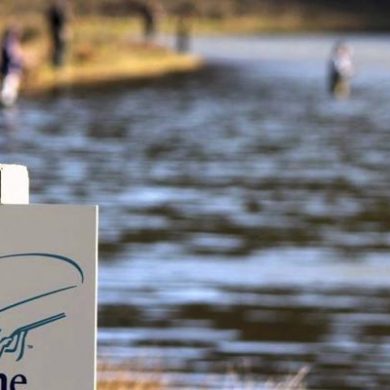Source: Atlantic Salmon Federation
“This is a serious issue,” said Jonathan Carr, ASF’s Director of Research and Environment, “as it is mandatory in New Brunswick for industry to report escapes of 100 salmon or more.” He has counted a total of 71 farmed salmon in the Magaguadavic fish trap this season, with a jump in numbers just lately. This is the largest number of escapes encountered at the Magaguadavic since 2001.
“The number is expected to rise, as additional fish have been observed at the fish ladder below the trap, added Jonathan Carr.
While people do pay greater attention to larger escapes, chronic low level escapes, year after year, can be just as threatening – and the Magaguadavic indicates that other regional rivers suffer this fate as well. Mr. Carr also notes that, without ASF’s monitoring program on the Magaguadavic River, these fish would have gone undetected.
“How many other escaped farmed fish are entering other rivers?” he asked. “We have no idea because there is no comprehensive monitoring program in N.B., despite salmon being farmed in the Bay of Fundy at some of the highest densities in the world.”
In other nearby Bay of Fundy rivers, there is no trap to prevent escapees from entering these rivers. Some of the escapes are sexually mature and the timing of this incident coincides with the wild salmon spawning season, which increases the likelihood and severity of negative interactions between wild and farmed fish. When farmed and wild salmon interbreed, the progeny are less fit to survive and are less likely to produce healthy offspring themselves.
This most recent unreported escape highlights the need for better containment of farmed salmon, as well as increased enforcement of existing provincial and federal regulations. ASF has long called for more transparency and accountability within the aquaculture industry, which will depend on stricter regulations by provincial and federal governments. Last week it was reported that between 20,000 and 50,000 mature farmed salmon escaped from a cage site on the South coast of Newfoundland, raising similar concerns in that province. The event was reported to DFO, which prompted officials to implement a fish recapture plan.

“The problem”, continued Mr. Carr, “is that reporting escape events is self-regulated by the industry. If they don’t report it, then we don’t know about it unless there is a monitoring station in place such as on the Magaguadavic”. In Maine, escaped farmed salmon can be traced back to the sea cage operator responsible using dna technology. “This helps to keep the industry honest”, said Mr. Carr.
“Our monitoring program on the Magaguadavic provides an early warning system for the salmon rivers in the region,” concluded Mr. Carr. “For instance, when escapes have been reported to Maine officials, they have set fences or traps in specific rivers to try to stop the infiltration of the escapes into those systems. These methods should also be adopted in Canada. Keeping these escaped salmon from interacting with endangered wild salmon in the Gulf of Maine and Bay of Fundy is fundamental to the recovery of Atlantic salmon populations.”

